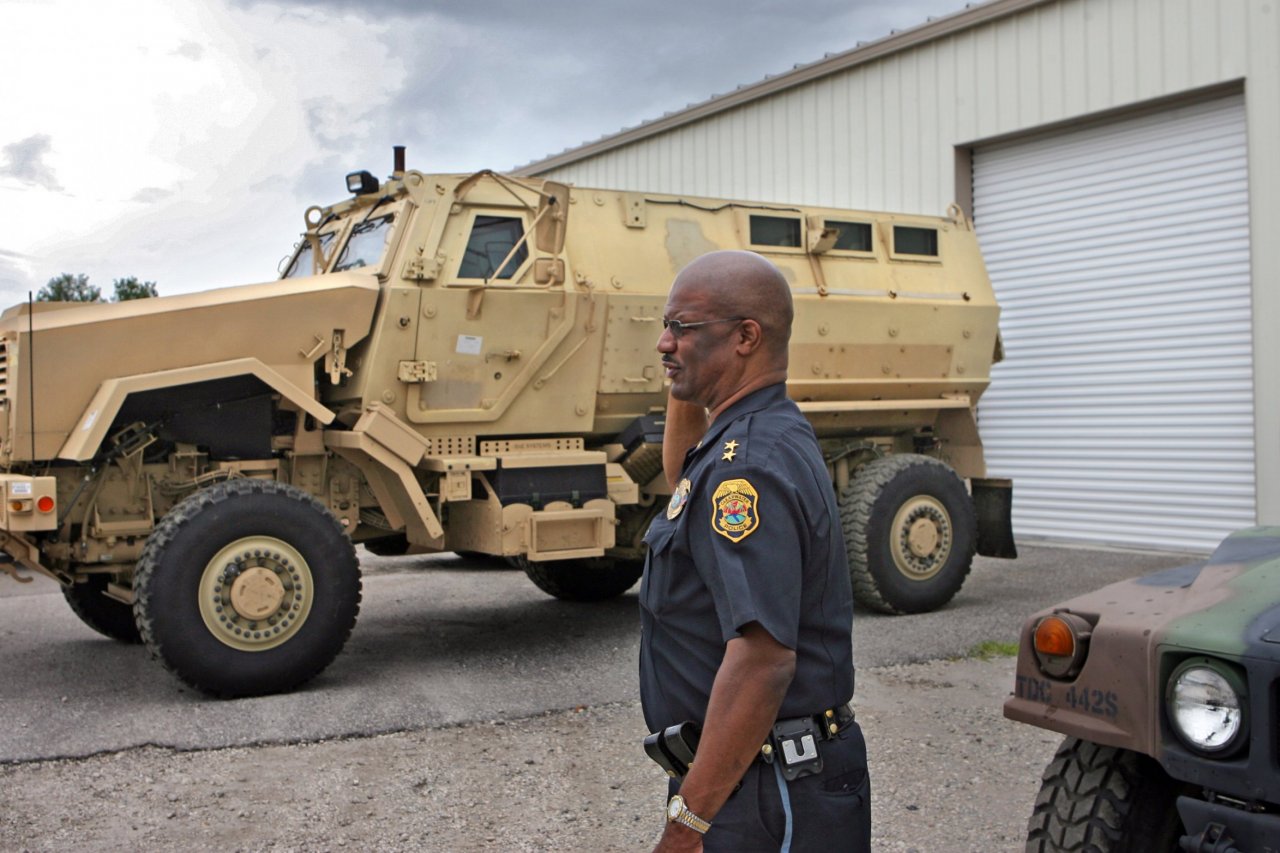In the predawn hours of May 28, 2014, a SWAT team burst into a home about an hour and a half's drive northeast from Atlanta. They were looking for Wanis Thonetheva, after a police informant said the man had sold him meth hours earlier. He wasn't there. Instead they found his uncle, Bounkham Phonesavanh; his aunt, Alecia Phonesavanh; and the couple's 19-month-old son, Bounkham Jr., whom they call Bou Bou.
Because Thonetheva had a previous weapons charge, the SWAT team's warrant allowed it to enter without knocking, so Officer Charles Long heralded the team's arrival by tossing a "flash-bang" grenade through the front door. Flash-bangs, sometimes called flash grenades or stun grenades, are designed to blind and disorient—temporarily—but not kill. They emit more than 12 million lumens of light, enough to blind anyone within five yards for up to five seconds. Their bang produces some 180 decibels of sound—your ears begin to hurt at 125 decibels; tissue starts to die at 180.
The grenade landed in Bou Bou's crib.
The baby was taken to Grady Memorial Hospital in Atlanta, where doctors induced a medical coma. "His chest wall had torn down to muscle," Dr. Walter Ingram, head of the burn trauma unit, told ABC News's 20/20. "And it tore his face down to bone, down to his teeth."
"Diversionary device"—not "flash-bang" nor "stun grenade"—is the preferred moniker for the device that maimed Bou Bou, according to Mark Grubelich, a researcher at Sandia National Laboratories. The first application of the concept—a loud bang and bright flash designed to disorient—was the Israeli raid to rescue hostages at the Entebbe Airport in Uganda in 1976, Grubelich says. Modern flash-bangs were developed by researchers at Sandia National Laboratories in the mid-1980s. These, though safer than the charge used by the Israeli commandos, are still dangerous. The Mk 141 flash-bang diversionary device, the first flash-bang licensed by Sandia, produces about 1.5 pounds per square inch (PSI) of pressure within five feet of the blast. According to the Centers for Disease Control and Prevention, one PSI is enough to shatter window glass; two PSI can blow a door off its hinges. And the heat produced is enough to burn a hole in a toddler, as the Phonesavanhs discovered.
Last summer, demonstrators in Ferguson, Missouri, protesting the shooting of an unarmed suspect by a police officer were met by cops in armored vehicles who fired tear gas into the crowds with grenade launchers, while riot police in jungle camouflage kept sniper rifles trained on them. The sight of civilian police in military garb pointing weapons of war at American citizens drew bipartisan outrage. At a September hearing before the Committee on Homeland Security and Governmental Affairs, Senator Rand Paul of Kentucky said militarization of police had gotten "far out of control." President Barack Obama set up a working group to study the problem.
On May 18, the White House said the working group had come up with regulations meant to make it harder for cops to acquire surplus military equipment at bargain-basement prices. It proudly announced that the federal government will no longer dispense military-grade weapons to police. In a speech announcing the new regulations in Camden, New Jersey, the president declared, "We've seen how militarized gear can sometimes give people a feeling like there's an occupying force, as opposed to a force that's part of the community that's protecting them and serving them. It can alienate and intimidate local residents, and send the wrong message."
Many applauded this change in policy. Kanya Bennett, a legislative counsel at the Washington, D.C., branch of the American Civil Liberties Union, called the ban "a critical step towards rebuilding trust between police and the people they have pledged to serve."
The new regulations will slow the acquisition of new equipment but won't demilitarize anything. Getting cops to part with their weapons of war will be a long, hard slog.
A footnote on Page 13 of the working group's 50-page report illustrates the difficulty federal regulators face in trying to put the machine-gun-toting genie back in the bottle. It touts a "government-wide assessment" to determine what "prohibited" equipment police have. That means the government doesn't even know what's out there, let alone how, or if, the feds are going to get it back.
Part of the reason regulators are in the dark is that police acquire military surplus through a slew of federal programs—and nobody has a comprehensive tally. Of the six federal agencies that operate equipment acquisition programs, only one, the Department of Defense (DOD), keeps track of what it sends where, says an administration official who asked not to be named.
And, to make things even thornier, each agency's program has its own set of rules and regulations. For instance, the DOD retains titles to equipment it transfers to police through its 1033 program. "It's like a lease," DOD spokesman Mark Wright says. "You can use it as long as you'd like. But when they're done with it, they can't just throw it away—'Hey, we have a modified M16 you gave us, and then we ran over it with a vehicle; now it's smashed into pieces so we just chucked it.' No, you can't do that. We're not even gonna be mad that you smashed it into pieces. You've just got to return it to us."
When it comes to weapons transferred from other agencies, it seems almost impossible for the federal government to snatch them back from police, since local jurisdictions now hold the titles. Other agencies that run equipment transfer programs, including the Departments of Justice, Homeland Security, Treasury and Interior, as well as the General Services Administration, don't retain titles. Federal regulators have not yet figured out how those agencies might get prohibited equipment back, according to officials from the Justice Department and the White House, who asked not to be named. "We're entering new territory," Wright says.
Another problem is that, according to another administration official who asked not to be named, any "recall" would apply only to equipment on the prohibited list, not items on the so-called controlled list, which includes flash-bang grenades like the one that nearly killed Bou Bou. These weapons, although mostly developed for military operations, have legitimate law enforcement uses, Obama's working group says. Also on that list are the mine-resistant vehicles that many in the public quite reasonably mistook for tanks during the Ferguson protests. The list also includes most police rifles, including sniper rifles, and tear gas, which signatories to the Chemical Weapons Convention agree not to fire at enemy soldiers but seem to have no problem firing at their own citizens.
So taxpayers are left to wonder what difference, if any, Obama's new regulations will make. Most cops don't seem fazed by them. Thomas Manger, president of the Major Cities Chiefs Police Association, said in a statement, "These recommendations, developed in consultation with law enforcement, ensure that we can acquire and utilize needed equipment in a manner that ensures transparency and maintains public confidence."
Maybe our best hope is to wait for the cops' military gear to wear out. But we'll be waiting a long time: Much of the newly regulated equipment was designed to operate in wartime conditions, whether it was the deserts of Iraq or the mountains of Afghanistan. They'll barely rust in, say, Watertown, Connecticut, whose police have a mine-resistant, ambush-protected vehicle, or MRAP. The town of 22,000, home to the prestigious Taft prep school, is not exactly Kandahar.



















